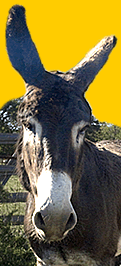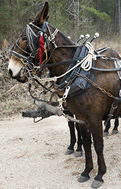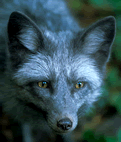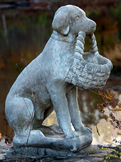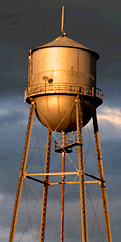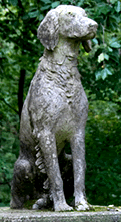|
|
|
|
 |
|
|
|

Surviving for nearly 70 years, "The Stockyards" in Pine Bluff, Arkansas, will soon be a thing of the past. The owner of the facility, the Glover Livestock Commission Company, is alive and well, but the face of the cattle business has changed. What used to go on in thousands of buildings like this one across our nation now transpires over the Internet and closed circuit TV. What does not transpire is the camaraderie and gathering of the faithful at the stockyards on sale days. That was the fun part. 
Sunday, February 27, 2011 James E. Glover started this building on West 6th Avenue in Pine Bluff, Arkansas, in April, 1941. Affectionately known locally as "The Stockyards," the building will not see the seventieth anniversary of its beginnings. It is being disassembled and carted off as this story is being written. The building shown above is the pen section of the Glover Livestock Commission Company. Like many Southern buildings and businesses, the stockyards did not start out at the size it is today. The entire premises comprise more than two city blocks (by my visual estimate). The stockyard pen section takes up half or more of that square footage. James E. Glover was a family man first and foremost and that's where he found his business partners. In fact, he raised them. At one time, the Glover Livestock Commission Company consisted of Glover; his sons Roy, James, Ed, Thomas, and Donny; and his daughter, Juanita Glover Lee. They worked side-by-side in the company, each pulling his or her own weight to make the organization prosper and grow. And grow it did. At one time, they ran as many as 3,000 head of livestock through the yards on sale days.  Now at the end of its nearly 70-year career, this gatepost near one of the input ramps of the stockyards is showing artistry not expected in this environment. A chisel made the original indentations; a couple of banging, crunching, grinding "too-ba-fours" did the rest — a masterpiece of wood sculpture never to be duplicated. James E. Glover died in 1951, but the business momentum he built continued in his absence. As time goes on, however, independent business people begin to have well, independent ideas. So in the 1980s Ed Glover sold his share of the business to his siblings and started his own business, Riverview Ranch. Before the eighties were out, Roy Glover died. Not long after his death, the family brought in Ed Lee, Juanita Glover Lee's oldest son. And the business proceeded as normal. In the mid-nineties, James C. Glover, my late father-in-law, sold his share of the business to his siblings and nephew and devoted his attention to raising cattle rather than selling them. He could and would also regale a gathering with homespun observations, the likes of which would put smiles, if not outright laughter, on even the most stoic of faces. Eventually, Donny Glover and Ed Lee sold their parts of the business to Thomas Glover, who is the owner today. As the selling end of the cattle business migrated to cyberspace, the demand for local stockyards faded like the last rose of summer. So it was time to make a business decision. But the tradition and memories live on. N O T E S:
Most of the time, there is more to the Photo of the Week story than can be told in an essay. And most of the time there are more pictures to be seen. Presuming that some folk will enjoy being privy to this trove of information, I have created a blog, “Weekly Grist for the Eyes and Mind,” where I am showing and telling “the rest of the story." There are also some blatantly commercial mentions of some of the things we do to earn our beans and taters. Click on the Weekly Grist logo and go to the blog. — J. D.
 |
|
|
|
|
|

|
|
|
|
CornDancer.com is the personal website of Dr. Freddie A. Bowles and Ebenezer Baldwin Bowles.
CornDancer has participated in the World Wide Web since 2000. Submissions are invited. Contact webmaster at threadspinner@corndancer.com |
|
|
|






